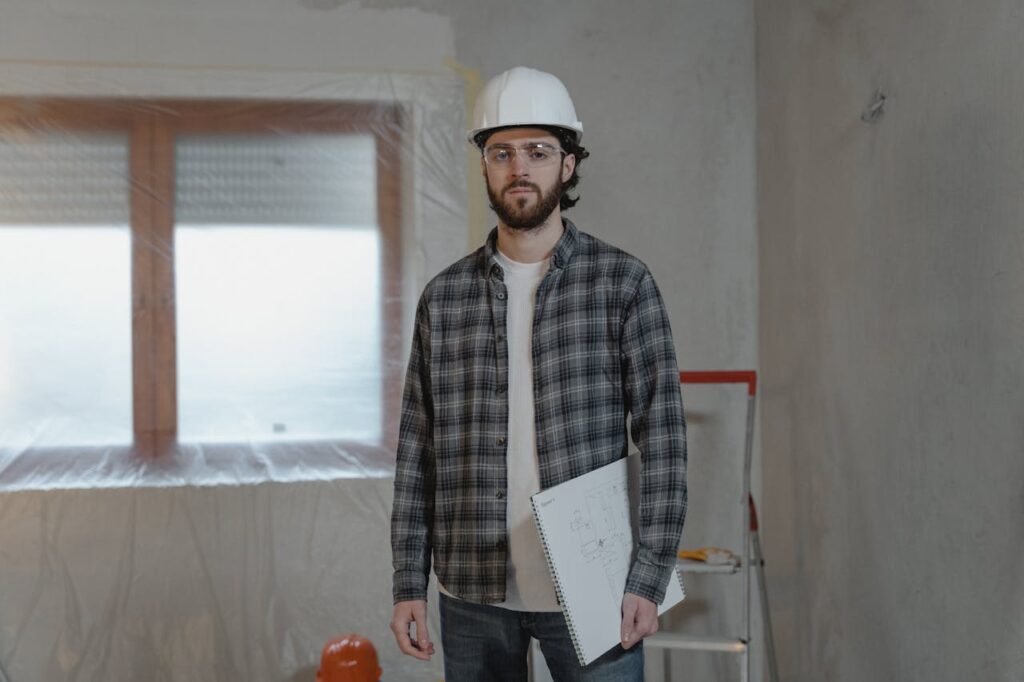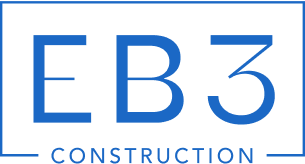Missed deadlines cost projects millions. When a major healthcare facility in Texas faced a six-month closeout delay, the owner lost significant revenue while we scrambled to address incomplete documentation and unresolved punch list items.
Construction project closeout is the final phase when all work, paperwork, and payments are wrapped up and the owner signs off. We coordinate inspections, collect warranties, transfer utilities, and deliver the keys while ensuring the project meets specifications, code requirements, and operational needs. This phase determines whether the project achieves its intended purpose and whether our relationships with owners remain strong for future work opportunities.
What Are The Core Steps In Construction Project Closeout?

Successful closeout requires a systematic approach that begins on the first day of construction. We break the process into distinct phases that build on each other, creating a predictable path from substantial completion to final payment. Each step requires specific deliverables and stakeholder coordination to maintain project momentum through the finish line.
Early Planning And Document Collection
We establish closeout requirements during preconstruction and begin collecting documents as work progresses. This means identifying required submittals, warranties, and certifications for each trade package before construction starts. We track document collection in real time rather than waiting until the end, when subcontractors may have moved to other projects.
Change orders receive immediate attention throughout construction to prevent last-minute complications. We process change documentation promptly and maintain running tallies of approved modifications. This approach prevents the common scenario where teams discover unresolved change orders during final accounting, which can delay retainage release for weeks.
Verification And Substantial Completion
We verify that all deliverables meet contract specifications before declaring work complete. This includes confirming that installed systems match approved submittals and that all testing requirements have been satisfied. Our teams conduct thorough reviews of each trade’s scope to identify any gaps or deficiencies early.
Substantial completion marks the point where the project is ready for intended use, even if minor items remain. We coordinate the joint walk-through with the owner and design team to create a comprehensive punch list. This inspection determines which items must be completed before final acceptance and establishes the timeline for remaining work.
Punch List Completion And Document Submission
Punch item resolution follows a structured approach with clear assignments and deadlines. We prioritize items based on safety, functionality, and owner occupancy needs. Each completed item receives verification and sign-off before removal from the list, ensuring nothing falls through the cracks.
Closeout documents flow to the owner in organized packages throughout this phase. As-built drawings reflect actual field conditions, including any approved changes from the original design. Operation and maintenance manuals provide comprehensive guidance for building systems, while warranties and affidavits confirm compliance with specifications and payment obligations.
Final Inspections And Training
Local authorities conduct final inspections according to jurisdictional requirements. We schedule these inspections strategically to avoid conflicts and ensure all prerequisites are met. Building departments typically require life safety systems testing, accessibility compliance verification, and code conformance confirmation before issuing final approvals.
Owner training sessions familiarize facility management teams with building systems and equipment. We conduct these sessions for HVAC controls, security systems, emergency procedures, and any specialized equipment. Proper training reduces warranty claims and helps owners maintain their investment effectively.
Utilities Transfer And Final Settlements
Utility accounts transfer from construction to permanent service during this phase. We coordinate with utility companies to ensure seamless transitions and confirm that all temporary services are properly disconnected. This process often requires lead time, particularly for complex facilities with multiple utility connections.
Final payment processing includes retainage release and collection of unconditional lien waivers. We reconcile all costs, process final payment applications, and obtain releases from each trade partner. The certificate of occupancy, where applicable, provides official authorization for building use and typically triggers the final payment milestone.
Project Handover And Documentation
The formal handover includes key transfer and final document delivery to the owner. We present organized documentation packages that facilitate ongoing facility management. Digital formats often accompany physical deliverables to support the owner’s document management systems.
A project debrief captures lessons learned while the experience remains fresh. We review what worked well, identify improvement opportunities, and document best practices for future projects. This final step transforms project experience into organizational knowledge that benefits subsequent work.
Which Documents Are Essential To Close Out A Construction Project?
Successful closeout depends on assembling the right documentation package for the owner. These documents provide the foundation for long-term building operations, maintenance planning, and future modifications. We organize essential closeout documents into distinct categories to ensure nothing falls through the cracks.
The punch list serves as the roadmap for final completion tasks. This document captures all remaining work items identified during the substantial completion walkthrough, including minor corrections, touch-ups, and system adjustments. We maintain detailed records of punch list progress to track completion status and coordinate final inspections.
As-built drawings represent one of the most valuable deliverables in any closeout package. These drawings reflect actual field conditions, showing changes made during construction that deviate from the original contract documents. As-built drawings capture revised routing of mechanical systems, structural modifications approved through change orders, and field-verified dimensions that differ from design intent.
Operation and maintenance manuals provide owners with comprehensive guidance for building systems. These manuals include manufacturer specifications, maintenance schedules, troubleshooting procedures, and contact information for service providers. We compile O&M manuals by system type, organizing HVAC, electrical, plumbing, and specialty equipment documentation in logical sections that facility managers can easily navigate.
Warranty documentation protects the owner’s investment by clearly defining coverage periods, terms, and procedures for warranty claims. We collect warranties from all subcontractors, suppliers, and manufacturers, organizing them by trade and expiration date. This systematic approach helps owners track warranty periods and ensures timely resolution of defects during coverage periods.
Inspection reports and certificates verify code compliance and system performance. These documents include final building inspections, fire safety certifications, elevator inspections, and specialized testing reports for commissioned systems. The certificate of substantial completion marks the formal transition of building responsibility to the owner, while the certificate of occupancy authorizes building use according to its intended purpose.
Financial documentation closes the contractual loop between all project parties. Lien waivers and lien release forms protect the owner from future payment claims by confirming that contractors and suppliers have received full compensation. Final pay applications document the project’s complete financial picture, including all approved change orders and final account reconciliation.
How Do Teams Prevent Delays During Closeout?

Preventing closeout delays requires proactive planning that begins at project kickoff. We establish closeout requirements during preconstruction, identifying documentation needs, training schedules, and inspection timelines before breaking ground. This early planning prevents the last-minute scramble that derails many projects at the finish line.
Document management forms the foundation of smooth closeouts. We maintain a centrally organized folder structure with clear naming conventions that everyone on the team understands. Real-time tracking systems monitor document collection progress, flagging missing items before they become critical bottlenecks. This organization eliminates the common scenario where teams spend final weeks hunting for warranties or inspection reports.
Communication clarity prevents most closeout disruptions. We set explicit expectations with subcontractors regarding their document responsibilities, timing requirements, and punch list obligations from contract signing. Regular milestone updates keep owners informed of progress and potential delays, building trust while managing expectations. When everyone understands their role and timeline, coordination flows naturally.
Punch List Management That Maintains Momentum
Effective punch list management starts with priority categorization and frequent monitoring. We conduct regular walkthroughs to identify issues early, sorting items by urgency and trade responsibility. Critical items that affect occupancy or safety receive immediate attention, while cosmetic fixes follow a structured completion sequence.
Digital tracking systems provide real-time visibility into punch item status, preventing the communication gaps that often extend closeout timelines. Subcontractors receive automated notifications about their outstanding items, while project teams monitor completion rates to allocate resources effectively. This systematic approach keeps everyone accountable and maintains project momentum.
Change Order Resolution And Financial Transparency
Change orders create the most dangerous closeout delays when left unresolved. We address modifications immediately upon identification, processing paperwork while the issue remains fresh in everyone’s memory. This prevents the accumulation of change order backlogs that can stall final approvals and payment processing.
Financial transparency supports timely closeout through accurate record keeping and regular reconciliations. We maintain updated cost tracking throughout construction, ensuring final payment applications reflect actual project costs. Timely lien waiver collection prevents payment delays, while clear documentation of all financial transactions reduces disputes that could extend the closeout period.
Proactive Scheduling And Utility Coordination
Training sessions and inspections require advance scheduling to avoid delays caused by unavailable personnel or scheduling conflicts. We confirm all prerequisites before booking these critical activities, ensuring inspectors have necessary documentation and owners are prepared for training sessions.
Utility transfers demand early coordination with service providers who often work on extended timelines. We initiate these conversations months before substantial completion, allowing time to resolve any complications or service interruptions that could delay occupancy.
Post-handover activities complete our delay prevention strategy. Document archiving preserves project records for future reference, while warranty tracking ensures we meet ongoing obligations. Stakeholder surveys capture lessons learned, improving our closeout process for subsequent projects and strengthening client relationships through demonstrated commitment to continuous improvement.
Conclusion And Next Steps

Successful construction project closeout requires treating it as a project within the project. We manage closeout by planning from day one, collecting documents during active construction, and maintaining control over change orders and punch items throughout the build phase. This approach prevents the last-minute scrambles that often derail projects and damage client relationships.
The foundation of effective closeout lies in delivering a clean, searchable handover package that owners can actually use. We complete comprehensive training sessions, secure all required final inspections, and process final payments including retainage release. The process concludes with a thorough project debrief to capture lessons learned, document archiving for future reference, and warranty tracking systems that protect both our interests and the owner’s investment. These disciplined practices consistently shorten closeout timelines, reduce project risk, and demonstrate the professionalism that leads to repeat work and referrals.
Ready to streamline your next project closeout? Contact EB3 Construction to discuss how we can help ensure your project finishes as strong as it starts.




